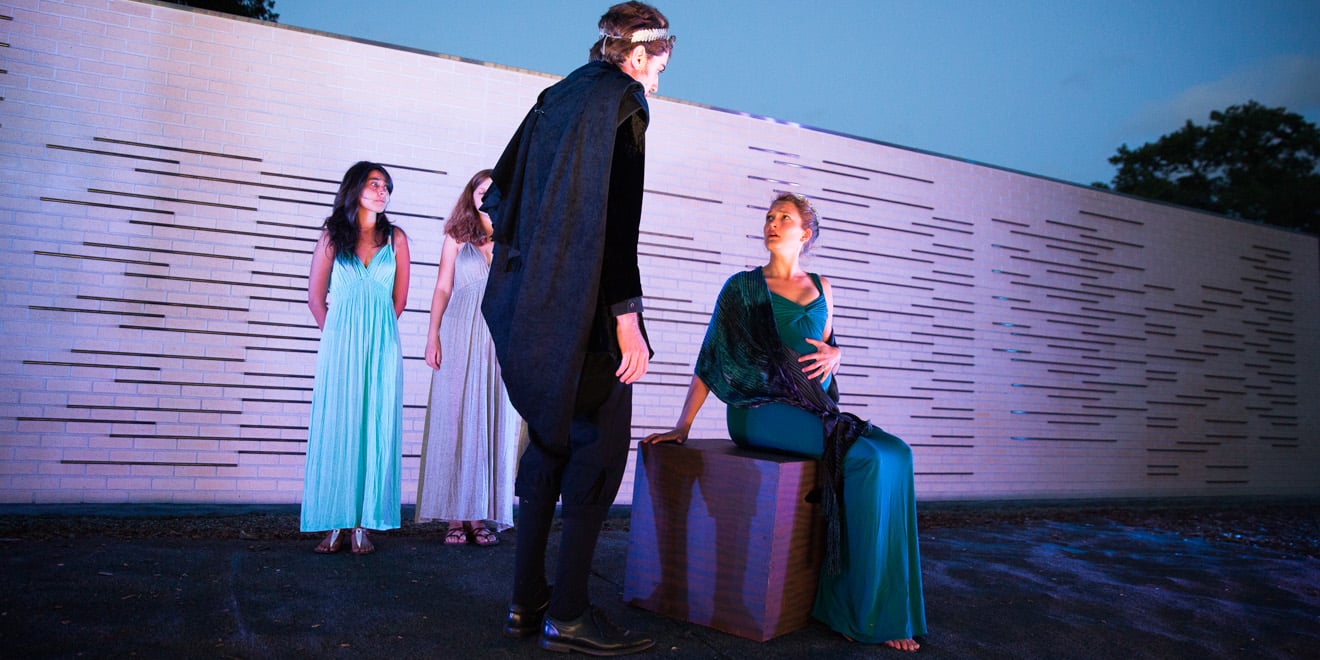Stanford has made a very visible effort to grow its arts scene recently, creating the Stanford Arts Institute, the Anderson Collection, the Bing Concert Hall and ITALIC, a year-long immersion in the arts program for freshmen. But despite Stanford’s growing investment in these expensive arts resources, performing arts groups have been facing difficulty with something crucial: finding a space to rehearse or perform. Student groups have been forced to rehearse in dining halls and parking lots. It gives the impression that Stanford is only superficially interested in investing in the arts.
“Finding rehearsal and performance spaces on campus has become next to impossible,” said Elizabeth Knarr ’16, TAPS major and stage manager for Stanford Repertory Theater. Laura Pietrantoni ’16, stage manager of At the Fountain Theatrical’s recent production of “Did We Offend You?,” noted that finding a space to rehearse is “by far the hardest part of being a stage manager.”
Since Roble gym’s recent closure for renovations, performing art groups have been feeling disenfranchised: they no longer have access to once crucial rehearsal spaces. Knarr said, “Most of the theater groups that I am involved in have had to resort to reserving dining halls and dorm lounges for rehearsals, which is not ideal because the floors are typically carpeted, which makes them very difficult to dance on.”
Sometimes, students cannot even access dining halls or dorm lounges, and they have to get creative. “I know dance and theater groups who have been forced to rehearse in empty parking lots late at night,” said Knarr. Katie Petway ’16, member of the Mariachi band, recalls a time when “[the band] ended up practicing in the Zapata kitchen.”
Even when you can get access to spaces, booking them can be an administrative nightmare. “Each space has its own peculiar set of rules about how you can book it, like having a music or drama major book it for you,” Pietrantoni lamented. “It’s hard to go around unifying all of these spaces, because they’re run by different people. That’s the biggest roadblock,” explained Benina Stern ’16, director of At the Fountain Theatrical’s “Did We Offend You?”
“It didn’t feel like it was a normal thing to be asking for space for a rehearsal. I always had to phrase it like I was asking for a huge favor from them and that I would be eternally grateful if they could grant it to me,” Pietrantoni bemoaned.
It’s also difficult to learn which spaces are available – Stern suggested that this knowledge is “mostly word of mouth.” Pietrantoni recommended making this information available all in one place: “While I was stage managing, I used to dream of having just one website where I could see all of what was available and request the space right there online.”
The expense of rehearsal and performance spaces makes it difficult to have shows run for multiple nights, if at all. Rachel Zilberg ’18, director of this year’s annual production of “The Vagina Monologues,” commented that while “You can do your show, you need thousands of dollars and certainly can’t afford many nights. I thought a place of growth and resources like Stanford would make its theater spaces easily accessible to student productions, but instead, finding a viable theater becomes more challenging than directing a show.” Petways recalled that “[the Mariachi Band] was having the most difficult time actually finding a place to practice that didn’t charge a fee. We’re just not on that kind of budget. We can’t rent a practice space.”
However, Sammi Cannold ’15, TAPS major and director of the upcoming production of “Evita,” insisted this problem is not unique to Stanford, suggesting this is an issue “at many other universities and even on Broadway; every season, New York producers race to snatch up Broadway theaters for their productions before they run out [of theaters].”
Some have commented that this space shortage has led to greater creativity in using nontraditional spaces. “Take Stanford Shakespeare Company, for example,” Stern said. “They do a nontraditional space show every spring. And those work out so well, and it’s really innovative how they’re staged and how they interact with the space.” Cannold recalled, “I was part of a team that staged a musical on a moving bus; and I know there’s a great deal of interest in using Stanford’s outdoor landmarks for future productions.”
Cannold encouraged us to see this issue in a positive light, saying, “If we had an over-abundance of spaces, perhaps these creative alternatives would not crop up as much… and as much as we bemoan the fact that it’s difficult to find space at Stanford, at the end of the day, the shortage is an indicator that a great deal of people want to create and be involved in the arts on campus.”
But this issue still suggests that while more and more Stanford students are expressing interest in the arts, Stanford still is not fully connecting arts-interested students with the necessary resources. President John Hennessy touched on this concern when he spoke at the freshman dorm Burbank this Tuesday. While discussing the role of the arts on the Stanford campus, Hennessy spoke about new arts facilities, like the Anderson Collection and the Bing Concert Hall. However, he added that “the next step as we move along” is “really a question of what we do to try to get the students better integrated in that whole scene and make them better involved [in the arts].”
Hennessy pointed out the major issue most arts students are facing: while Stanford’s new arts facilities may give the appearance of a growing arts scene, these new resources are rarely utilized by students. The next step in fostering the growth of Stanford’s art scene is not only making new arts facilities, but making these facilities directly available and accessible to the students.
Contact Steve Rathje at srathje ‘at’ stanford.edu.
